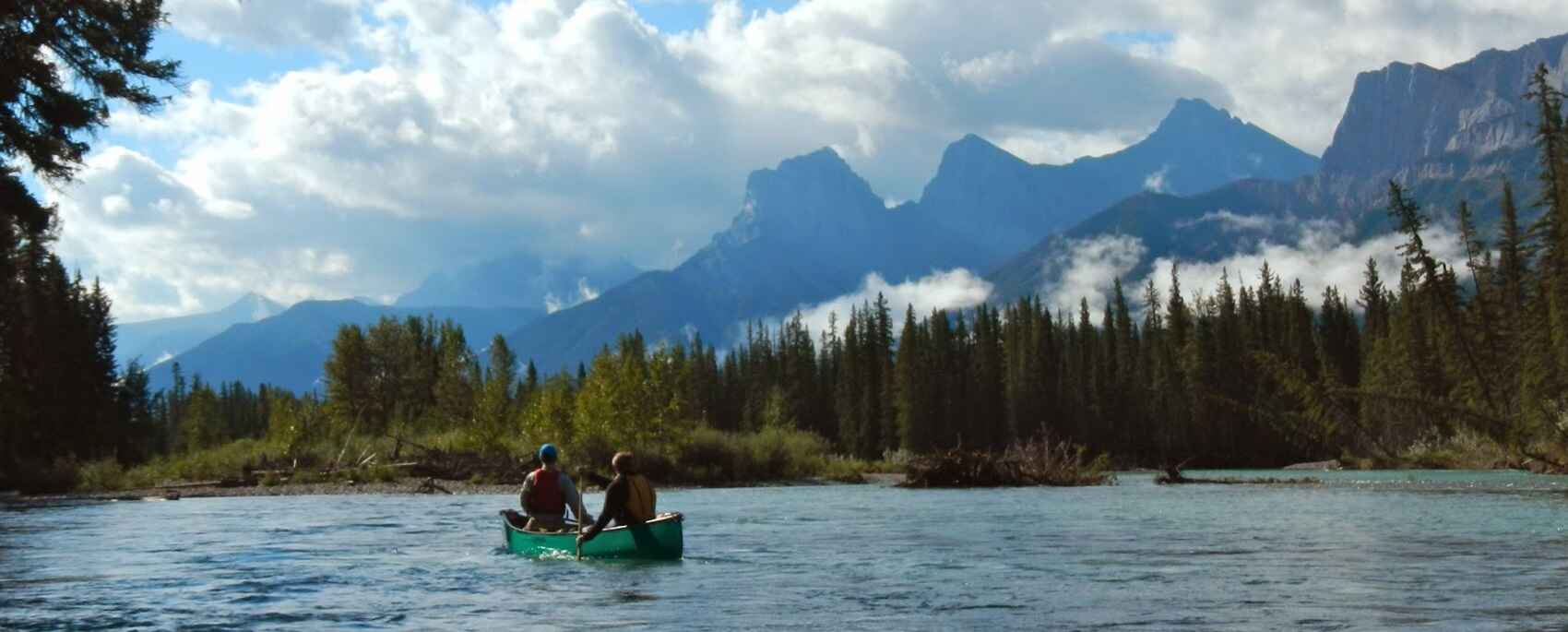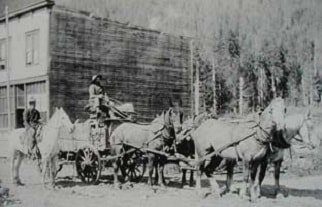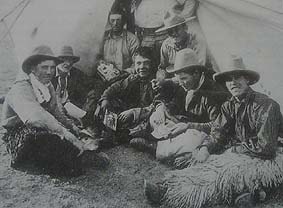     
|
Emerald Lakes B&B Japan in the Heart of the Rockies
|
     
|

 After a long drive across the Rockies and almost running out of fuel, we arrived in Canmore, where Mary from Emerald Lakes B&B was waiting for us. Located on the heights of the small town, the B&B is spacious and modern, with a large living room with a high ceiling and a centrally located kitchen on the ground floor, featuring an old-style stove. Mary was already busy because tomorrow is Thanksgiving Day. Turkey and baked ham, and much more.
After a long drive across the Rockies and almost running out of fuel, we arrived in Canmore, where Mary from Emerald Lakes B&B was waiting for us. Located on the heights of the small town, the B&B is spacious and modern, with a large living room with a high ceiling and a centrally located kitchen on the ground floor, featuring an old-style stove. Mary was already busy because tomorrow is Thanksgiving Day. Turkey and baked ham, and much more.
 About ten guests were present, including Carole, the owner of Cedar Spring Bed & Breakfast; Richard with his very British accent, an entrepreneur overwhelmed by the influx of work; Sergeant Don Cohn of the Royal Canadian Mounted Police; Mike, Carole's friend, a physical education teacher in England, an athlete of 50 years who will soon be climbing Everest with his students.
About ten guests were present, including Carole, the owner of Cedar Spring Bed & Breakfast; Richard with his very British accent, an entrepreneur overwhelmed by the influx of work; Sergeant Don Cohn of the Royal Canadian Mounted Police; Mike, Carole's friend, a physical education teacher in England, an athlete of 50 years who will soon be climbing Everest with his students.
Mary is a tall lady with a lot of personality, somewhat eccentric and artistic. All over her large house, illuminated by large bay windows, there are paintings, sculptures, and other Asian, particularly Japanese, porcelains. Married to a Japanese man, she spent a large part of her life between Japan, the USA, and Canada. The refined breakfasts are served on a teak table in the living room with a view of the snow-capped mountains.
Canmore and Banff share this ski resort atmosphere, surrounded by the imposing and already snow-capped Rocky Mountains. Gone are the days of the trading posts where trappers came to sell their furs. Go back 117 years, and you will see the town of Canmore being born.
Go back 11,000 years, maybe even more, and you will see the nomadic peoples belonging to the First Nations in search of big game in the Bow Valley. Their passage is marked by the remains of their hunting camps. The Bow River Valley served as a seasonal hunting ground for several groups, including the Kootenays or the Peigans. The bows (in English = 'bow') made by the Indigenous people from the branches of trees growing along the river gave it its name.
 A more recent connection is revealed by the name of the mountain Ehagay Nakoda (or The Last Nakoda) which overlooks the town of Canmore. In the 17th century, after they migrated west to escape smallpox and internal conflicts among the Sioux people, the Bow River region became home to the Nakoda people, who originally were part of the Dakota Sioux from the Upper Missouri River Valley in the United States. The Nakoda, also known as the Stoneys because of their cooking method using heated stones, still speak the Nakoda dialect of the Sioux language.
A more recent connection is revealed by the name of the mountain Ehagay Nakoda (or The Last Nakoda) which overlooks the town of Canmore. In the 17th century, after they migrated west to escape smallpox and internal conflicts among the Sioux people, the Bow River region became home to the Nakoda people, who originally were part of the Dakota Sioux from the Upper Missouri River Valley in the United States. The Nakoda, also known as the Stoneys because of their cooking method using heated stones, still speak the Nakoda dialect of the Sioux language.
 Since they were off the paths of white exploiters, the Stoneys remained relatively uninfluenced by Europeans until the mid-19th century when Methodist missionaries arrived. In 1877, after signing Treaty 7 with the Canadian government, the Blackfoot, Peigan, Blood, Sarcee, and Stoney nations ceded their rights to their traditional lands. In return, they were granted reserves and promised food and money. Today, more than 3,400 people live in three reserves set aside for the three different groups forming the Stoney Nation: the Wesley, the Chiniki, and the Bearspaw. The largest reserve, centered around the town of Morley, is located 20 minutes east of Canmore.
Since they were off the paths of white exploiters, the Stoneys remained relatively uninfluenced by Europeans until the mid-19th century when Methodist missionaries arrived. In 1877, after signing Treaty 7 with the Canadian government, the Blackfoot, Peigan, Blood, Sarcee, and Stoney nations ceded their rights to their traditional lands. In return, they were granted reserves and promised food and money. Today, more than 3,400 people live in three reserves set aside for the three different groups forming the Stoney Nation: the Wesley, the Chiniki, and the Bearspaw. The largest reserve, centered around the town of Morley, is located 20 minutes east of Canmore.
In 1883, the Canadian Pacific Railway reached what would become Canmore, named in honor of Lord Malcolm of Canmore, the King of Scotland between 1057 and 1093. Four years later, rich layers of anthracite were discovered on the south bank of the Bow River along the slopes of the mountains, marking the beginning of Canmore's boom. The town's prosperity was strongly linked to the success of the mine.
On "Black Friday," July 13, 1979, the mine was closed, and residents wondered if the town would fade away. But tourism took over, at first slowly and then rapidly from 1988, the Olympic year for Calgary and the Rockies.
Emerald Lakes B&B, Mary Adelen, Canmore, Alberta, Canada - Map 





Former holiday hotel with a garden along the Allier, L'Etoile Guest House is located in La Bastide-Puylaurent between Lozere, Ardeche, and the Cevennes in the mountains of Southern France. At the crossroads of GR®7, GR®70 Stevenson Path, GR®72, GR®700 Regordane Way, GR®470 Allier River springs and gorges, GRP® Cevenol, Ardechoise Mountains, Margeride. Numerous loop trails for hiking and one-day biking excursions. Ideal for a relaxing and hiking getaway.
Copyright©etoile.fr

 After a long drive across the Rockies and almost running out of fuel, we arrived in Canmore, where Mary from Emerald Lakes B&B was waiting for us. Located on the heights of the small town, the B&B is spacious and modern, with a large living room with a high ceiling and a centrally located kitchen on the ground floor, featuring an old-style stove. Mary was already busy because tomorrow is Thanksgiving Day. Turkey and baked ham, and much more.
After a long drive across the Rockies and almost running out of fuel, we arrived in Canmore, where Mary from Emerald Lakes B&B was waiting for us. Located on the heights of the small town, the B&B is spacious and modern, with a large living room with a high ceiling and a centrally located kitchen on the ground floor, featuring an old-style stove. Mary was already busy because tomorrow is Thanksgiving Day. Turkey and baked ham, and much more. About ten guests were present, including Carole, the owner of Cedar Spring Bed & Breakfast; Richard with his very British accent, an entrepreneur overwhelmed by the influx of work; Sergeant Don Cohn of the Royal Canadian Mounted Police; Mike, Carole's friend, a physical education teacher in England, an athlete of 50 years who will soon be climbing Everest with his students.
About ten guests were present, including Carole, the owner of Cedar Spring Bed & Breakfast; Richard with his very British accent, an entrepreneur overwhelmed by the influx of work; Sergeant Don Cohn of the Royal Canadian Mounted Police; Mike, Carole's friend, a physical education teacher in England, an athlete of 50 years who will soon be climbing Everest with his students.
 A more recent connection is revealed by the name of the mountain Ehagay Nakoda (or The Last Nakoda) which overlooks the town of Canmore. In the 17th century, after they migrated west to escape smallpox and internal conflicts among the Sioux people, the Bow River region became home to the Nakoda people, who originally were part of the Dakota Sioux from the Upper Missouri River Valley in the United States. The Nakoda, also known as the Stoneys because of their cooking method using heated stones, still speak the Nakoda dialect of the Sioux language.
A more recent connection is revealed by the name of the mountain Ehagay Nakoda (or The Last Nakoda) which overlooks the town of Canmore. In the 17th century, after they migrated west to escape smallpox and internal conflicts among the Sioux people, the Bow River region became home to the Nakoda people, who originally were part of the Dakota Sioux from the Upper Missouri River Valley in the United States. The Nakoda, also known as the Stoneys because of their cooking method using heated stones, still speak the Nakoda dialect of the Sioux language.
 Since they were off the paths of white exploiters, the Stoneys remained relatively uninfluenced by Europeans until the mid-19th century when Methodist missionaries arrived. In 1877, after signing Treaty 7 with the Canadian government, the Blackfoot, Peigan, Blood, Sarcee, and Stoney nations ceded their rights to their traditional lands. In return, they were granted reserves and promised food and money. Today, more than 3,400 people live in three reserves set aside for the three different groups forming the Stoney Nation: the Wesley, the Chiniki, and the Bearspaw. The largest reserve, centered around the town of Morley, is located 20 minutes east of Canmore.
Since they were off the paths of white exploiters, the Stoneys remained relatively uninfluenced by Europeans until the mid-19th century when Methodist missionaries arrived. In 1877, after signing Treaty 7 with the Canadian government, the Blackfoot, Peigan, Blood, Sarcee, and Stoney nations ceded their rights to their traditional lands. In return, they were granted reserves and promised food and money. Today, more than 3,400 people live in three reserves set aside for the three different groups forming the Stoney Nation: the Wesley, the Chiniki, and the Bearspaw. The largest reserve, centered around the town of Morley, is located 20 minutes east of Canmore.




